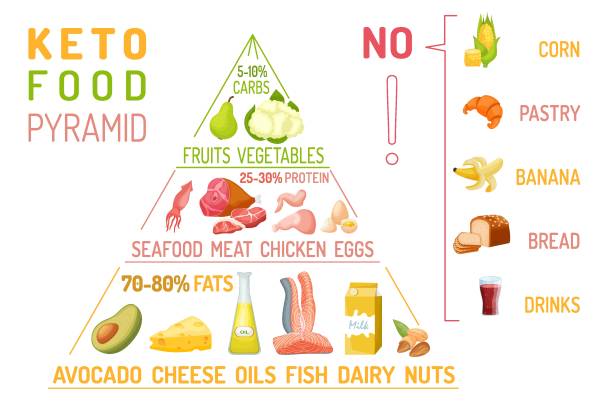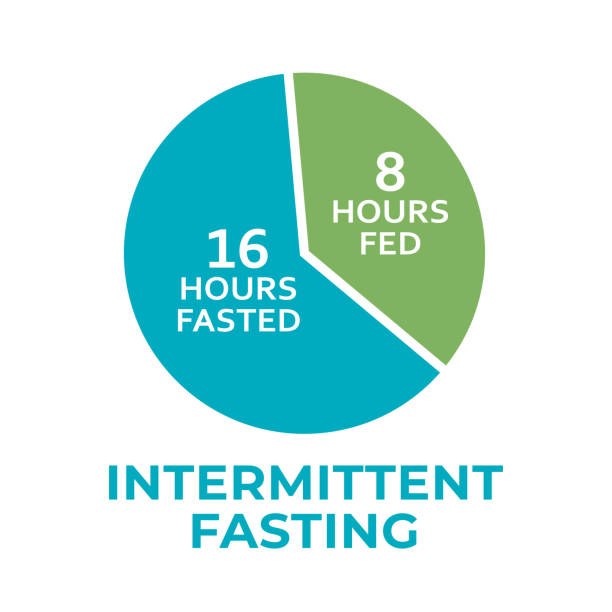
INTRODUCTION
In this present reality where different eating regimen patterns and weight reduction techniques appear to arise consistently, two strategies stand out enough to be noticed and acclaim for their capability to assist with peopling shed pounds and work on their general wellbeing: the keto diet vs Intermittent fasting. The two methodologies have their remarkable qualities, and people frequently end up discussing which one is more powerful. In this complete blog entry, we will jump profound into the universe of sustenance science to look at the keto diet and intermittent fasting, investigating their systems, benefits, possible disadvantages, and the conditions wherein one may be more reasonable than the other. Thus, how about we set out on this excursion of revelation to assist you with pursuing an educated decision for your wellbeing and prosperity.
PART 1: THE KETO DIET – A HIGH-FAT, LOW-CARB LIFESTYLE

UNDERSTANDING THE KETO DIET:
The ketogenic diet, ordinarily alluded to as “keto,” is a low-sugar, high-fat eating regimen that has acquired monstrous prevalence lately. Its crucial guideline is to prompt a condition of ketosis in the body, where it fundamentally consumes fat for energy rather than carbs. Accomplishing ketosis includes definitely decreasing sugar admission and expanding fat utilization to the place where your body shifts from involving glucose as its essential energy source to utilizing ketones.
HOW THE KETO DIET WORKS
The ketogenic diet, frequently alluded to just as the keto diet, is a dietary methodology intended to move the body’s essential wellspring of energy from sugars to fats. This interaction is accomplished through a progression of dietary changes that at last lead to a state called ketosis. This is a breakdown of the way the keto diet works:
1) CARB LIMITATION:
The center standard of the keto diet is the critical decrease of sugar consumption. Regularly, people on a keto diet mean to consume between 20 to 50 grams of starches each day. This uncommon decrease in carbs is fundamental since it powers the body to track down an elective wellspring of energy.
2) EXPANDED FAT UTILIZATION:
While carbs are restricted, fat utilization is significantly expanded. In a standard keto diet, fats make up around 70% to 80% of everyday caloric admission. This high-fat admission furnishes the body with an adequate inventory of unsaturated fats.
3) KETONE CREATION:
At the point when carb admission is seriously limited, the body starts to separate fats into particles called ketone bodies through an interaction known as ketogenesis. These ketones act as an elective fuel hotspot for cells all through the body, including the cerebrum.
4) KETOSIS:
A definitive objective of the keto diet is to accomplish a state called ketosis. In ketosis, the grouping of ketones in the blood rises essentially, and the body becomes adjusted to involving these ketones as its essential wellspring of energy rather than glucose, which is gotten from sugars.
5) FAT CONSUMING:
With the body essentially involving fat for energy, the keto diet advances the breakdown of put away fat. This prompts the arrival of unsaturated fats from fat cells and their transformation into ketones for energy, bringing about weight reduction over the long haul.
6) SETTLING GLUCOSE:
One more key part of the keto diet is its capability to assist with settling glucose levels. At the point when starches are restricted, there are less spikes and crashes in glucose, making it a dietary choice that certain individuals with type 2 diabetes view as valuable.

PROS OF THE KETO DIET
The ketogenic diet, frequently alluded to just as the keto diet, is a dietary methodology intended to move the body’s essential wellspring of energy from sugars to fats. This interaction is accomplished through a progression of dietary changes that at last lead to a state called ketosis. This is a breakdown of the way the keto diet works:
1) CARB LIMITATION:
The center standard of the keto diet is the critical decrease of sugar consumption. Regularly, people on a keto diet mean to consume between 20 to 50 grams of starches each day. This uncommon decrease in carbs is fundamental since it powers the body to track down an elective wellspring of energy.
2) EXPANDED FAT UTILIZATION:
While carbs are restricted, fat utilization is significantly expanded. In a standard keto diet, fats make up around 70% to 80% of everyday caloric admission. This high-fat admission furnishes the body with an adequate inventory of unsaturated fats.
3) KETONE CREATION:
At the point when carb admission is seriously limited, the body starts to separate fats into particles called ketone bodies through an interaction known as ketogenesis. These ketones act as an elective fuel hotspot for cells all through the body, including the cerebrum.
4) KETOSIS:
A definitive objective of the keto diet is to accomplish a state called ketosis. In ketosis, the grouping of ketones in the blood rises essentially, and the body becomes adjusted to involving these ketones as its essential wellspring of energy rather than glucose, which is gotten from sugars.
5) FAT CONSUMING:
With the body essentially involving fat for energy, the keto diet advances the breakdown of put away fat. This prompts the arrival of unsaturated fats from fat cells and their transformation into ketones for energy, bringing about weight reduction over the long haul.
6) SETTLING GLUCOSE:
One more key part of the keto diet is its capability to assist with settling glucose levels. At the point when starches are restricted, there are less spikes and crashes in glucose, making it a dietary choice that certain individuals with type 2 diabetes view as valuable.

PART 2: INTERMITTENT FASTING – CYCLING BETWEEN EATING AND FASTING

UNDERSTANDING INTERMITTENT FASTING:
Intermittent fasting (IF) is certainly not a particular eating regimen yet rather an eating design that switches back and forth between times of eating and fasting. It has a few varieties, however the most well-known ones incorporate the 16/8 technique (16 hours of fasting, 8 hours of eating), the 5:2 strategy (eating regularly for 5 days and seriously limiting calories for 2 non-sequential days), and the 24-hour quick.
HOW INTERMITTENT FASTING WORKS:
Intermittent fasting (IF) is definitely not a customary eating routine but instead an eating design that cycles between times of eating and fasting. It has acquired prevalence for its potential medical advantages, especially for weight the board and metabolic wellbeing. Here is a definite clarification of how irregular fasting functions:
1) FASTING WINDOWS:
Irregular fasting includes isolating your day or week into explicit time spans for eating and fasting. The length of these fasting windows can differ contingent upon the picked technique. Some normal intermittent fasting strategies include:
- 16/8 TECHNIQUE: This technique includes fasting for 16 hours every day and limiting your eating to a 8-hour window. For instance, you could eat between 12:00 PM and 8:00 PM and quick from 8:00 PM to 12:00 PM the following day.
- 5:2 TECHNIQUE: In this methodology, you eat routinely for five days of the week and essentially confine calorie consumption (typically around 500-600 calories) on two non-successive days.
- 24-HOUR FASTING: With this technique, you quick for an entire 24 hours on more than one occasion per week. For example, you could eat at 7:00 PM and not eat again until 7:00 PM the next day.
- SUBSTITUTE DAY FASTING: This includes shifting back and forth between long stretches of normal eating and long periods of fasting, where you either consume not very many calories or none by any means on fasting days.
2) INSULIN GUIDELINE:
During fasting periods, insulin levels in the body drop fundamentally. Insulin is a chemical liable for directing glucose and working with the capacity of overabundance glucose as fat. Diminished insulin levels during fasting advance the use of put away fat for energy.
3) CELL AUTOPHAGY:
Fasting triggers a phone interaction called autophagy. During autophagy, the body stalls and reuses harmed or broken cells and cell parts. This cycle adds to cell fix and support and may have different medical advantages, including potential illness avoidance.
4) CALORIC LIMITATION:
Irregular fasting frequently prompts a characteristic decrease in calorie consumption. Since there is a restricted time period for eating, many individuals find it trying to consume however many calories as they would in an ordinary day. This calorie limitation can bring about weight reduction after some time.
5) METABOLIC CHANGES:
Fasting can prompt a few metabolic variations. For instance, it might build the body’s aversion to insulin, which can further develop glucose control. Fasting can likewise animate the creation of human development chemical (HGH), which assumes a part in fat digestion and muscle safeguarding.
6) FAT CONSUMING:
During fasting periods, particularly after glycogen stores are exhausted, the body begins separating fat for energy. This fat oxidation can add to weight reduction and further developed body creation.

PROS OF INTERMITTENT FASTING
Intermittent fasting (IF) is an eating design that has acquired prominence for its potential medical advantages, past weight the executives. Here are a portion of the critical benefits or professionals of discontinuous fasting:
1) POWERFUL WEIGHT THE BOARD:
Intermittent fasting can be a successful methodology for weight reduction and weight support. By limiting the eating window, it frequently prompts a decrease in general calorie consumption, which can bring about weight reduction after some time.
2) FURTHER DEVELOPED INSULIN RESPONSIVENESS:
Assuming that has been displayed to upgrade insulin awareness, assisting the body with managing glucose all the more actually. This can be especially helpful for people in danger of type 2 diabetes or those with insulin opposition.
3) UPGRADED FAT CONSUMING:
Fasting periods urge the body to involve put away fat for energy, prompting expanded fat oxidation. This can add to further developed body arrangement and decreased muscle versus fat ratio.
4) HUNGER CONTROL:
Many individuals find that intermittent fasting assists them with better controlling their craving. During fasting periods, hunger chemicals might diminish, making it more straightforward to control calorie admission and decrease indulging.
5) SIMPLICITY:
Assuming is somewhat easy to follow and doesn’t need complex dinner arranging or explicit food limitations. It can without much of a stretch be integrated into different ways of life.
6) FLEXIBILITY:
Irregular fasting offers adaptability in picking the fasting plan that turns out best for you. You can choose from different techniques, like the 16/8 strategy, 5:2 strategy, or substitute day fasting, in view of your inclinations and day to day schedules.

PART 3: COMPARING THE TWO APPROACHES
1)WEIGHT LOSS AND FAT BURNING:
the keto diet vs intermittent fasting both can prompt weight reduction, however they do as such through various systems.
- KETO DIET: Weight reduction on the keto diet principally happens because of a decrease in calorie consumption and the body’s dependence on fat for energy. The condition of ketosis advances fat consuming, which can prompt fast beginning weight reduction, especially as water weight.
- INTERMITTENT FASTING: IF advances weight reduction by confining the time window during which people can eat, frequently bringing about a characteristic decrease in calorie consumption. Moreover, fasting periods can upgrade fat oxidation and metabolic rate.
2)SUSTAINABILITY AND ADHERENCE:
One basic figure picking an eating routine or eating design is its manageability over the long haul.
- KETO DIET: The keto diet can be trying to support for some people because of its severe sugar limitations. It frequently requires fastidious feast arranging and might be less charming for the individuals who lean toward carb rich food varieties.
- INTERMITTENT FASTING: Assuming can be more economical for certain individuals since it doesn’t limit food decisions or explicit macronutrients. Many find it more straightforward to integrate fasting periods into their everyday daily schedule.
3)HEALTH BENEFITS BEYOND WEIGHT LOSS
The two methodologies: keto diet vs intermittent fasting both offer potential medical advantages past weight the board.
- KETO DIET: It might further develop glucose control, diminish aggravation, and increment levels of HDL (great) cholesterol. Some examination proposes it very well may be useful for epilepsy and certain neurological circumstances.
- INTERMITTENT FASTING: In the event that has been related with further developed insulin awareness, decreased aggravation, and upgraded cell fix processes. It might likewise uphold cerebrum wellbeing and life span.
PART 4: WHO SHOULD CHOOSE WHICH APPROACH?
1)THE KETO DIET MAY BE SUITABLE FOR:
- THE INDIVIDUALS WHO CAN STICK TO SEVERE DIETARY LIMITATIONS: In the event that you can easily confine your starch consumption and appreciate food sources wealthy in solid fats, the keto diet may be a feasible choice.
- PEOPLE WITH EXPLICIT MEDICAL ISSUE: A few ailments, like epilepsy, may profit from the ketogenic diet. Notwithstanding, talk with a medical services proficient prior to rolling out any dietary improvements.
2) INTERMITTENT FASTING MAY BE SUITABLE FOR
- THOSE SEARCHING FOR AN ADAPTABLE EATING DESIGN: In the event that you don’t really want to follow a severe eating routine arrangement and partake in the adaptability of picking when to eat, irregular fasting might be a superior fit.
- INDIVIDUALS LOOKING FOR WORKED ON METABOLIC WELLBEING: On the off chance that has shown guarantee in further developing insulin responsiveness, which can be advantageous for people with type 2 diabetes or those in danger of creating it.
PART 5: COMBINING KETO AND INTERMITTENT FASTING
It’s significant that a few people select to consolidate components of the two methodologies: the keto diet vs intermittent fasting. Prepare intermittent fasting while at the same time following a keto diet. This can be powerful for some, yet it requires cautious intending to guarantee sufficient calorie admission and supplement balance. Joining the two strategies might upgrade the advantages of both, like superior weight reduction and metabolic wellbeing.

PART 6: CONCLUSION
In the skirmish of keto diet vs intermittent fasting, there’s no reasonable champ that suits everybody. The two methodologies have their assets and shortcomings, and the decision eventually relies upon individual inclinations, way of life, and wellbeing objectives. Whether you decide to go keto, embrace intermittent fasting, or consolidate components of both keto diet vs intermittent fasting, it’s urgent to talk with a medical services proficient or enrolled dietitian prior to rolling out huge dietary improvements. This guarantees that your picked approach lines up with your wellbeing needs and objectives, assisting you with accomplishing reasonable outcomes for your general prosperity.
FAQs
There is some proof that keto and intermittent fasting both may assist with diminishing irritation, and further develop stomach wellbeing and when done pair may essentially affect weight reduction, quicker than if you pick only one of the two
Following a low-carb, high-fat eating routine accompanies its own host of medical advantages, yet including intermittent fasting can supercharge your outcomes. These two eating styles truly work incredible together as being keto-adjusted can assist with lessening the hindrances to section for endlessly fasting can assist you with getting into ketosis quicker.
For the most part, you’ll have to stick to a calorie deficiency of around 500 calories each day. Going on like this, you ought to begin to see observable weight reduction after somewhere in the range of 10 to 21 days. Some might meet their weight reduction objectives sooner, while others might take a piece longer.
